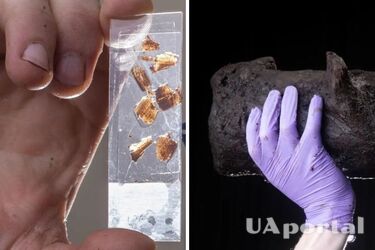In England, archaeologists have discovered a prehistoric "time capsule" (photo)

A prehistoric 'time capsule' containing preserved woodland and insect remains has been found on a peat bog on the Holnicote Estate in Exmoor, England.
The discovery was made in an area known as Alderman's Barrow Alotment, which was undergoing restoration as part of a project to improve degrading peatlands in Exmoor and the South West.
The time capsule contains woodland and insect remains from the Neolithic and Bronze Age, giving a unique insight into how peat was formed and what species of plants and insects inhabited the environment in ancient times, writes Heritagedaily.
You may also be interested: Near London found the first in history complete Roman "burial on the bed" (photo)
During the archaeological work were found more than 100 remains of riparian hydraena beetles, as well as specimens of dung beetles, roving beetles, moss mites, water mites.
The remains of the prehistoric forest, consisting of fragments of trunks, branches and twigs, have been dated to about 4,500-3,500 years ago.
They also found part of a Neolithic willow tree, as well as specimens of birch and oak, and traces of various plant species such as sedge and rushes.


Dr. Ed Trager, Senior Environmental Archaeologist at Wessex Archaeology, specializing in plant remains and wood, explained, "These discoveries provide a unique and tangible way of connecting with Exmoor's past, they illustrate the changing nature of landscapes and show how this striking landscape came about."
He added that scientists can use this information to develop a "baseline" for peatland regeneration studies that could last centuries, if not millennia.
"This long-term view allows us to look beyond the many significant changes in peatland land use practices that have occurred over the past few centuries," Dr. Ed Trager concluded.
Recall, in the Arab Emirates discovered treasure-filled jug aged 1800 years.
Want to receive the most relevant news about the war and events in Ukraine - subscribe to our Telegram-channel!
